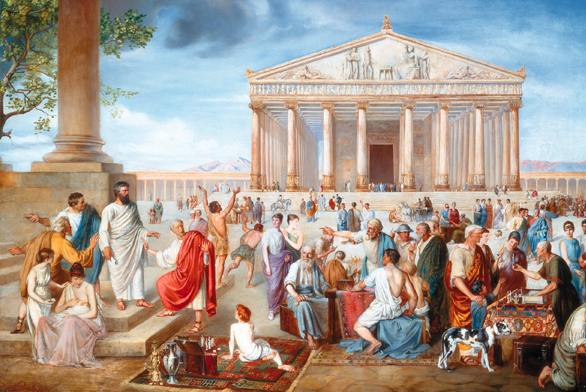Image Details

Phillips, The International Fine Arts Auctioneers/Bridgeman Art Library
Paul preaches to gentiles in front of a temple to the goddess Artemis (Diana) in this 19th-century painting by Austrian artist Adolf Pirsch. Paul (standing on the raised platform at left) was the great evangelist of the early church, and the foremost advocate of allowing Gentile converts to follow Jesus without first becoming Jews and obeying Jewish law.
It is through Paul, who wrote about 40 percent of the New Testament, that we get much of our information about James, whom he called a “pillar” of the church (Galatians 2:9). History has often seen the two men as rivals, divided over the question of whether all followers of Jesus had to follow Jewish laws—for instance, by being circumcised (if they were men) and maintaining kashrut, the Jewish dietary regulations. But as Witherington explains, James actually did much to heal the early rift between Jewish and Gentile followers of Jesus. In an often-misinterpreted speech to a meeting of church leaders gathered in Jerusalem, James declared that Gentiles who wished to follow Jesus need only break with their previous pagan practices, such as idol worship. They did not need to convert to Judaism.
The scene depicted here, described in Acts 19, takes place at the end of Paul’s lengthy stay in the city of Ephesus (in modern Turkey), a center for the cult of Artemis. Although Paul’s preaching here made many new converts, some residents of the city feared that the new religion would put an end to their lucrative business of making and selling pagan idols. Inflamed by a silversmith named Demetrius (the man pointing an accusing finger at Paul in the middle of the painting), a crowd nearly riots against Paul and his followers, until a town clerk intercedes to disperse them.
